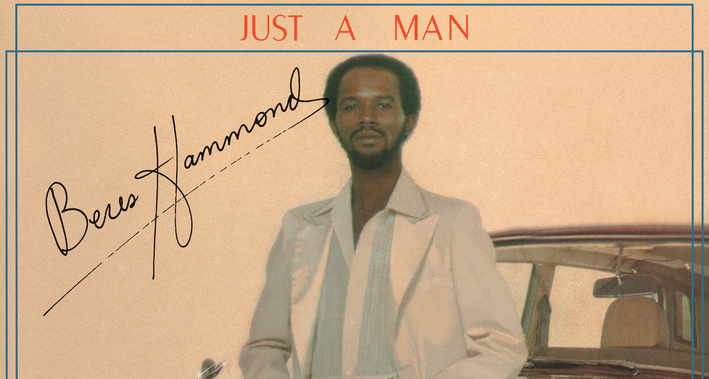Photo: YouTube
There are innumerable expositions on “gaps” that Black American People confront—especially “economic gaps.” But beyond wealth, household income, unemployment rate, and possibly homeownership rate gaps, have we given purposeful consideration to where and what Black Americans would be if the post bellum period had unfolded with equality and freedom for us?
This is the counterfactual on which we should focus: What would be our condition today if we had been unencumbered by the color of our skin, the kinkiness of our hair, the thickness of our lips, and the flatness of our noses?
Usually, the argument is that one can—at best—solve a counterfactual through statistical estimation—and then with some uncertainty. But, in this case, a logical counterfactual is before us transparently. And if it is not, then we can certainly say that, should the logical counterfactual not hold, then an actual counterfactual must be an improvement over the logical counterfactual. In either case, both counterfactuals portend improved well-being all around—for Blacks and Whites.
What is the logical counterfactual? It is that Black American People would enjoy the identical distribution of outcomes experienced by White Americans.[1] Consequently, for example:
• Black American males and females would live 7.5 and 3.2 years longer, respectively on average;[2]
• Only 21.3 percent of our households would be single headed as opposed to 58.8 percent;[3]
• We would have owned 9,875,217 employer and 4,234,197 nonemployer businesses not 124,551 and 3,115,000, respectively, in 2018 (latest data available);[4]
• There would be about 417 thousand Black chief executive officers and general and operations managers, not the existing 203.5 thousand;[5]
• There would be about 89 Black American billionaires, not the current 7;[6]
• There would be about 938 thousand Black millionaires, not the current 488 thousand;[7]
• Black American student borrowing to earn bachelor’s degrees during the 2017-18 school year would been about $51,000 not $61,000;[8] and
• There would have been about 111,000 incarcerated Black Americans in 2020, not 582,100.[9]
On the other hand, if the logical counterfactual is inaccurate, then we suggest that an actual counterfactual, which would be based on a non-zero-sum scenario, would be marked by improved outcomes over those achieved under a logical counterfactual. The argument is that a racially/ethnically harmonious US society (devoid of economic inefficiencies (read “wasted resources”) caused by White Supremacy and its attendant racism, the sabotage that it motivates, the suppression of human capital formation, and the resulting anxiety/stress and its impact on health; but rich with high-quality human capital, greater innovation through the free expression of Black genius, and greater commercial interchange with foreign nations made possible by a more favorable view of the US), would enable much greater production, income, wealth, and higher quality life outcomes than those experienced to date.[10]
In the past, Black American People were willing to accept a logical counterfactual. But White America has been adamant about stiff-arming such a proposition. So much so that Black America has reached the point where the logical counterfactual is no longer an acceptable offering.
Rather, White America, “cutting off its nose to spite its face,” has shown a willingness to accept suboptimal national (economic) outcomes just to be the “boss.” This clearly uneconomical behavior is proof positive of White America’s racist nature and its unyielding allegiance to White Supremacy.
Therefore, Black American People are increasingly prepared to reject consideration of counterfactuals in lieu of creating a grander and brighter future under the banner of self-determination. Hearkening to our ancient past, we are informing ourselves about, and reinvesting ourselves in, the greatness of our ancestors with an intent to help raise the global society to a new plateau using at least the last two millennia or so of European and European-American History as an example of what not to do when engaging the world.
This all goes to show us that, beyond considering logical and actual counterfactuals (even if they
can be estimated/measured), it appears judicious to ignore counterfactuals altogether and to simply
set our sights on producing optimal outcomes when planning our future.
Dr. Brooks Robinson is the founder of the Black Economics website: https://blackeconomics.org/index.php/about-us/
References:
[1] We emphasize a White American comparison because Black and White Americans have engaged jointly in evolving the US more so than any other racial or ethnic groups in the nation. We acknowledge that we are ignoring here the plight of “indigenous” people, keeping in mind that Black Americans may have a claim to indigenousness.
[2] See Elizabeth Arias and Jiaquan Xu (2019), “United States Life Tables, 2019, “National Vital Statistics Report: Vol 70, No. 19; p.3. https://www.cdc.gov/nchs/data/nvsr/nvsr70/nvsr70-19.pdf (Ret. 120522). We use available 2019, not 2020 (the latest available), statistics to avoid abnormal outcomes caused by the COVID-19 Pandemic.
[3] See Paul Hemez and Chanell Washington (2021), “Percentage and Number of Children Living with Two Parents Has Dropped Since 1968,” US Census Bureau; https://www.census.gov/library/stories/2021/04/number-of-children-living-only-with-their-mothers-has-doubled-in-past-50-years.html (Ret. 120622).
[4] Estimates derived from US Census Bureau data at the following three locations: (1) 2018 Population -https://www.census.gov/newsroom/press-kits/2019/detailed-estimates.html; (2) 2018 Employer firm data -https://data.census.gov/table?t=Owner+Race+and+Ethnicity&g=0100000USy=2018d=ECNSVY+Annual+Business+Survey+Annual+Business+Survey&n=00&tid=ABSCS2018.AB1800CSA01; (3) 2018 Nonemployer firm data- https://data.census.gov/table?q=ab1800*&tid=ABSNESD2018.AB1800NESD01. (Ret. 120622)
[5] These estimates were derived using US Census Bureau population statistics for 2021 and US Bureau of Labor Statistics Current Population Survey data from “Table 11. Employed persons by detailed occupation, sex, race, and Hispanic or Latino ethnicity;” https://www.bls.gov/cps/cpsaat11.htm (Ret. 120922). From the latter statistics, we estimated the number of White and Black chief executive officers (CEOs) and general and operations managers (GOMs) during 2021. Afterwards, we estimated the White CEO and GOM-to-White Population (about 176.4 and 280.4, respectively) and then applied the result to the Black population.
[6] See Rob LaFranco and Chase Peterson-Withorn, Editors (2022), “The Richest 400 People in America,” Forbes Magazine; https://www.forbes.com/forbes-400/ (Ret. 100622). There are about 506.5 thousand White Americans for each White Billionaire in 2022. Applying the White-population-to-White-billionaire the Black population yields about 89 Black billionaires.
[7] See Kori Hale (2022), “Millionaire Status is on the Rise with 5.2 Million People Joining the Club,” Forbes Magazine; https://www.forbes.com/sites/korihale/2022/10/25/millionaire-status-is-on-the-rise-with-52-million-people-joining-the-club/?sh=74f4cb591f20. Also see Statista (2020), “Millionaires in the United States Statistics & Facts;” https://www.statista.com/topics/3467/millionaires-in-the-united-states/#topicOverview. (Ret. 120622). Hale reports statistics on White and Black percentages of total millionaires in the country, while Statista reports the total number of millionaires. Using these statistics in combination, we find that of the 6.98 million US millionaires, 76 percent are White (5.3 million), while 8 percent are Black (488 thousand). The 5.3 million White millionaires and the 252 million White US Population in 2021 means that about every 48th White American is a millionaire. Using that metric along with the about 45 million Black population yields the 938 Black millionaires.
[8] See Digest of Education Statistics, Table 331.95, “Percentage of undergraduate degree/certificate completers who ever received federal loans and parent PLUS loans and average cumulative loan amount, by degree level, selected student characteristics, and institution control: 2017-18;”https://nces.ed.gov/programs/digest/d21/tables/dt21_331.95.asp (Ret. 120622).
[9] See the following two US Department of Justice, Bureau of Justice Statistics Reports: Ann Carson (2021), “Prisoners in 2020 – Statistical Tables,” p. 10 (https://bjs.ojp.gov/content/pub/pdf/p20st.pdf); and Todd Minton and Zhen Zeng (2021), “Jail Inmates in 2020 – Statistical Tables,” p. 8 (https://bjs.ojp.gov/content/pub/pdf/ji20st.pdf) (Ret. 120622). The two sources combined yield 621,000 White and 582,100 Black incarcerated persons during 2020. We used these statistics and US population statistics from the Census Bureau to produce the results that are presented.









